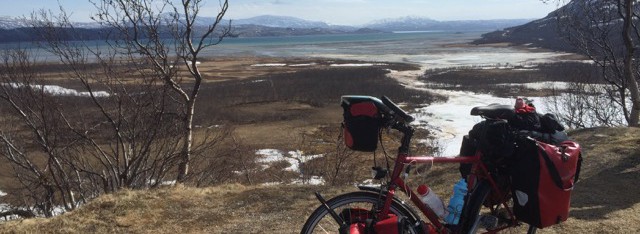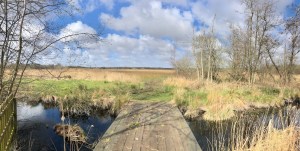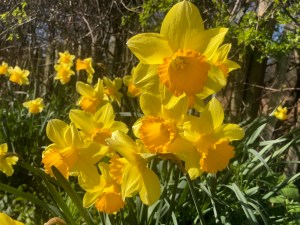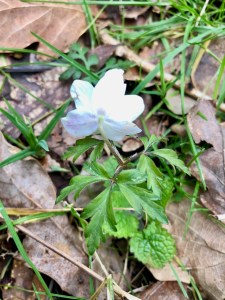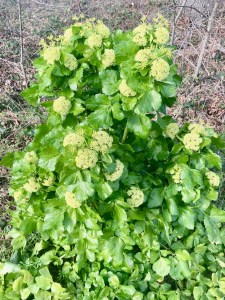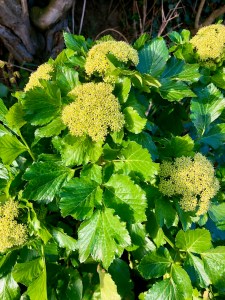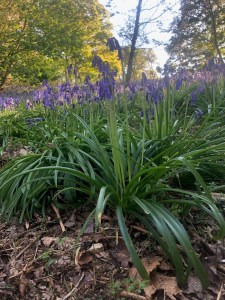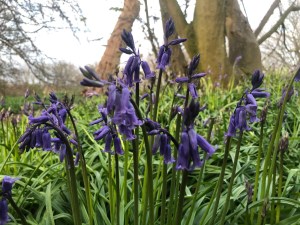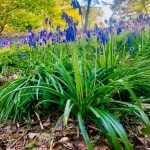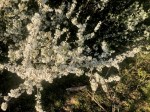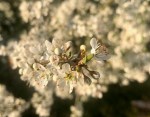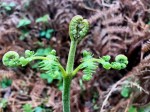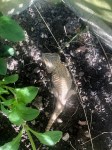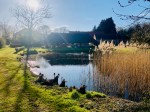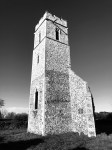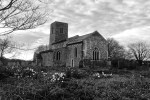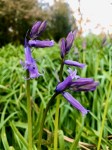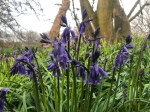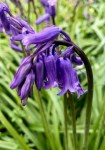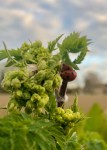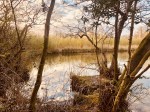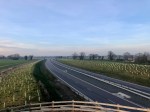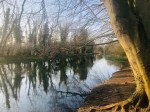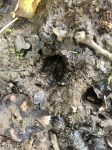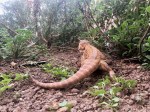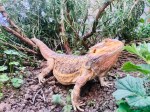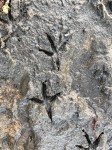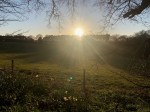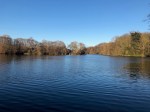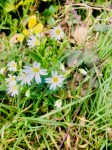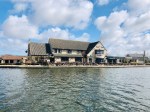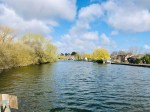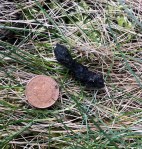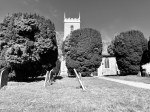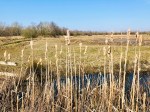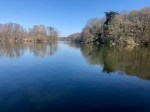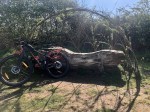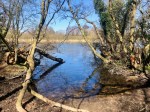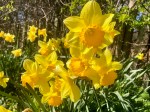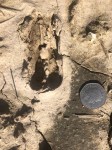Over the last couple of months I’ve been able to get out a bit more, either before the lockdown started on my bushcraft course, or for my daily exercise regime now we’re having to practice social distancing. I’m grateful that whilst Coronavirus has brought hardship and grief to many, at least it came along in springtime, and with good weather to boot. I am enjoying walking or cycling through the Norfolk countryside, exploring hedgerows and copses, fields and Broads.
As well as birds and mammals getting busy with nest building, courtship and young, insects are buzzing and plants are growing. Since starting to learn about wild plants I’ve been amazed at the number of different types one can find in a small area. Different habitats can hold a multitude of different species; sunlight hitting a cleared woodland ride can cause dormant seed banks to germinate into colour, soggy marshland paths produce verdant green borders, and the hedgerows of Norfolk country lanes are just alive with plant life, in turn providing food and homes for animals and birds.
- Marshland in the Norfolk Broads provide excellent habitat
- Riding down local Norfolk trails – hedgerows alive with life
- Daffodils enjoying the sunshine
This year more hedgerows and road borders are being spared the chop and left to grow, leading to what seems to be an even greater abundance of springtime life. When I come upon a roadside verge that has been mowed, or a hedgerow that’s been flailed, I really notice the difference; sterile, smells empty, no colour, less buzzing and birds. It’d be great if Councils left far more of these areas to grow, and if people could leave at least a corner of their gardens to go wild, all providing vital habitat for plants and animals who are otherwise up against it.
As there are just so many plants to cover I’ve decided to split my blog into a few posts. I’ll cover ten or so species each time and see how far I get. Most species will be native to the UK, but they’ll be the odd non-native that slips in just because they’re interesting or have a pretty flower, or because I didn’t realise they were non-native. The definition of a native species seems to vary, but in general it’s a species which has evolved and is self-sustaining in a region, and which has not been introduced; although it could have arrived and colonised an area by natural non-human based means. To count as native the plant species needs to have been present in an area since ‘historical times’. Unfortunately I need another definition for ‘historical times’ at this point, as for example Sweet Chestnut (Castanea sativa), whilst widespread in the UK, is technically non-native as the Romans introduced it; good food source and building material.
I’ve already included a picture of Daffodils (Narcissus), of which there must be hundreds if not thousands of different species. Their brilliance in early spring can drag you out of the winter doldrums, and they also have a number of different medicinal properties which I won’t go into right now (colds, burns, wounds). If I do mention any medicinal properties please don’t take my word as gospel; do your own research and don’t believe everything you read. I’m pretty sure none of the plants I cover will cure COVID19.
I probably should have thought about how I was going to order this a bit more, rather than just going through my photos including them as they come. But that didn’t happen so here goes.
I’ll start off with the beautiful Wood Anenome ( Anemone nemorosa). I have to credit the second of the pictures below to the Wildife Trust website, as I needed another photo after realising the one I took a month and a half ago was from behind; not my greatest photography moment. The Wood anenome flowers from March through to May, although I think they’re about done this year. It has 6 or 7 petals (actually sepals) that can be purple streaked, surrounding yellow anthers. It’s low growing with slightly feathery leaves. I don’t know of any modern medicinal properties and think it’s probably quite toxic if you were to eat it. I always feel like Spring is firmly on its way when these appear.
- Wood Anemone (Anemone nemorosa) – ancient woodland indicator
- Wood Anenome 2
The Wood anenome is an ancient woodland indicator species (AWI). An AWI is a plant species which is slow spreading, rather than a pioneer species that spreads by windblown seeds. They flower early before the tree canopy blocks out the sunlight, and are generally shade tolerant. Their rate of spread by natural means is limited to about a foot a year (if that), mostly via roots and bulbs, so when you see a carpet of bluebells, or a sea of Wood anenomes, you know they’ve been there for a long time. The definition of an Ancient Woodland is where there has been continuous tree cover since AD 1600; we have very little of it left in the UK, and projects such as HS2 definitely aren’t helping. If you’re in a wood and you see an AWI such as Wood anenome it’s a good sign the woodland has been there for a long time, and deserves respect and protection. One side note; the trees in an ancient woodland could still look young if it’s an area of coppice that has been managed for centuries, such as a traditional hazel coppice, so you won’t always see ancient Ent like looking veterans.
Next up is Jack-by-the-hedge, or Garlic Mustard (Alliaria petiolata), which flowers from April to June. The footpaths and hedgerows around me are full of this at the moment, but it can be found in woodland too. It’s a native biennial, biennial meaning it’s life-cycle goes across two years; it’ll flower in its second year. Perennial plants differ from biennials in that they live for more than 2 years, and can flower every year (not always though).
I really like Jack-by-the-hedge. The leaves have a strong garlic taste, and can be eaten raw or boiled. You can eat the seeds that come later in the year which are also garlicky. Definitely a contender for Ransoms, otherwise known as wild garlic, which I’ll cover later or in another post depending on when my photo comes up!
Pedalling down country lanes at the moment I’ve seen a number of fine examples of the next entry, Greater Periwinkle (Vinca major). As suspected this plant was introduced to the UK, and can now be found throughout southern England. I’ve seen it in hedgerows where it trails and climbs, putting out these amazing purple flowers. I don’t think it has any particular uses, although maybe you could use the trailing stems to make rudimentary cordage.
There are a lot of small white flowering plants around at the moment, and it’s easy to get them mixed up. This next one could easily be confused with Greater Stitchwort, I reckon anyway, but is in fact Field Chickweed, or Field Mouse-ear Chickweed (Cerastium arvense). I’m finding this along field edges at the moment, as well as roadsides. It’s a perennial, flowering from April to August, and is edible, although I’ve never eaten it and apparently you might want to cook it because of the texture. Pretty distinctive 5 sets of paired petals and yellow anthers.
On the subject of when plants are appearing and flowering in Springtime, it’s worth talking about how things seem to be happening earlier and earlier every year as average temperatures increase due to climate change. I was introduced the concept of Phenology by a conservation scientist recently.
Phenology is the study of periodic plant and animal life cycle events and how these are influenced by seasonal and interannual variations in climate, as well as habitat factors.
What I hadn’t thought about before, but now seems blindingly obvious, is the impact plants emerging, flowering and going to seed at different times, due to climate change, will have on other species that might rely on that plant. If for example plants are starting to grow earlier in the year, then caterpillars that feed on those plants may appear earlier. The problem is that they may be around before the bird nesting season, meaning a species of bird that relies on that caterpillar for feeding its young may now be caught short on food supplies. That’s just one example and I’m sure there are loads of other worrying changes of a similar nature that will impact our flora and fauna. Thank you to Dr Charlie Gardner, conservation scientist, for that info; I hope I got it right!
Climate change impact lesson over, back to plants. Here’s another one the Romans introduced because it’s a good food source. Alexanders (Smyrnium olusatrum), or hedge parsley, is a biennial, flowering from April to June, and there’s absolutely loads of it on the road edges and footpaths around me. I think it might be regarded as a bit of an invasive pest of a plant, and it certainly has quite a strong smell when there’s lots of it together. You can eat all of it which is handy; the leaves can make a white sauce or can be used as a herb, the younger stems cooked like asparagus, the roots make an alternative to parsnips and the flower buds can be eaten in salads. I’ve yet to try any but it’s on my to do list, I just get a bit nervous around the Umbellifer family, of which Alexanders is a member, as several of them can kill you very easily. Best not to get them mixed up really, and I’ll cover some of the poisonous ones on a future blog post.
- Alexanders (Smyrnium olusatrum)
- Alexanders (Smyrnium olusatrum) also called hedge parsley
Lesser Celandine (Ficaria verna) is another common plant I find in Norfolk, and throughout the UK. It used to be called Ranunculus ficaria but the Latin name has changed now, just to confuse matters. It’s a member of the buttercup family, as one might guess from the bright yellow flowers, and has other names such as pilewort. It also has quite distinctive heart shaped leaves. The name pilewort comes from its traditional medicinal use where the bulbous roots were used to make an infusion to treat haemorrhoids. The roots look a bit like haemorrhoids, which perhaps where the idea came from, but I have no idea as to their effectiveness; limited I suspect. It flowers from March to May, is a perennial, and can be seen carpeting banks and beside footpaths.
The photograph below isn’t perhaps the best example of the next entry, Red Deadnettle (Lamium purpureum), which is the first of several nettles I’ll include. This one doesn’t sting, flowers from March to October, and is again pretty common throughout the UK on verges, waste ground and field edges. I believe it does have uses in herbal medicine due to its astringent and diuretic properties, as well as being anti-inflammatory, anti-bacterial and anti-fungal, so you could use it for a wound wash or to make a poultice; nature is pretty funky when it comes to keeping wounds clean and helping them heal. It’s really not hard to find this if you go out for a wander.
Another Ancient Woodland Indicator species can be found in our native Common Bluebell (Hyacinthoides non-scripta). This is a favourite of many, including me, not just for the colour that carpets woodland before the tree canopy closes, but also for the heady perfume they emit; such a lovely scent. It’s a perennial flowering from April to June, and is illegal to pick. I think it might be under threat from the Spanish Bluebell which was introduced and is escaping into the same habitat as our bluebell. When walking in the woods it’s good to take care to not step on bluebell leaves which are easily damaged; these plants take a long time to spread! Usage wise I think you can make glue from the sap and mushed up bulbs, but it really doesn’t seem like a good idea. They are also poisonous to eat, so let’s just leave them alone and admire their purple amazingness and heady scent.
- Bluebells carpeting woodland floor
- Common Bluebell (Hyacinthoides non-scripta)
- Common Bluebell – one of my favourites
I’m not really sure of the exact species in my next photo, but it’s a Horsetail of some description. It was in a marshy bit of ground so could be a Marsh Horsetail (Equisetum palustre), or one of several other types, maybe Equisetum arvense. I don’t think gardeners like it very much as apparently it’s invasive and doesn’t flower, but I liked the vibrant green of it, and the intriguing shape and structure. I don’t know if it has any medicinal properties.
Wood Spurge is another AWI species, and pretty common in Southern England and Wales. It’s a perennial flowering from March to May, with yellow-green disc like flowering structures making it easy to recognise. As with other AWI’s it spreads slowly via underground rhizomes, creeping long the forest floor. The milky white latex sap from Wood Spurge is poisonous, and used to be used to burn off warts. Take care if you try this as leaving the sap on for too long can make your skin permanently photo-sensitve.
I think that’s my ten species for this post, with Daffodils included as a bonus. There are hundreds of plants I could cover, but I’ll concentrate on the ones I can find locally, and also the ones that are featured on my bushcraft course. There are around 30 I need to learn the Latin names for, as well as their uses, so I’ll feed those into future posts if I can find them. There are just so many cool plants out there like Wood Sorrel, Foxgloves, Primroses, Bugle, Herb Robert and Pignuts, to name but a few.
If you spot any plants I’ve misidentified please let me know. I’m using a variety of books including the excellent Wild Flowers of Britain by Roger Phillips, as well as an App on my phone called ‘Picture This’ ,which doesn’t always give the right answer but often points me in the right direction.
More plants and flowers next week, possibly interspersed with an alternative offering should I be inspired to write something else.
Stay frosty 🙂
